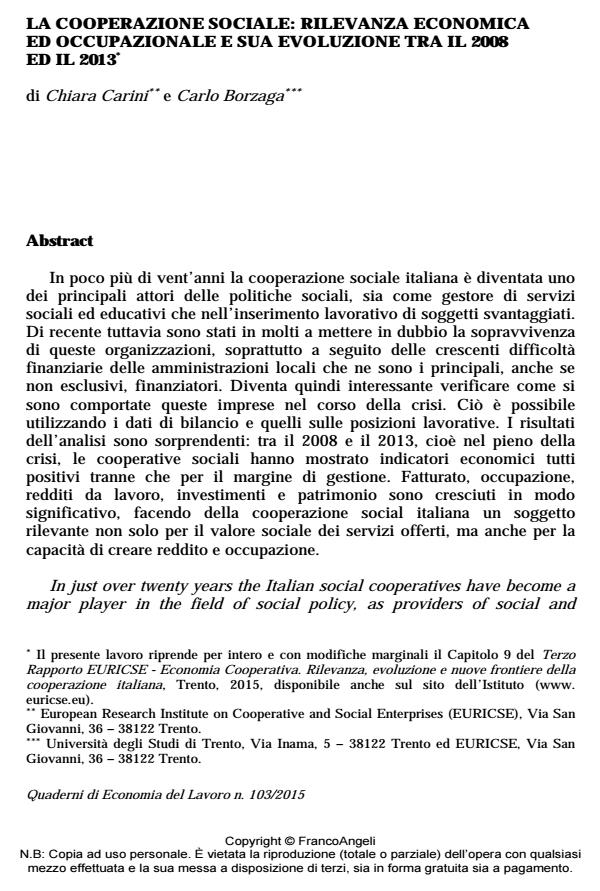La cooperazione sociale: rilevanza economica ed occupazionale e sua evoluzione tra il 2008 ed il 2013
Journal title QUADERNI DI ECONOMIA DEL LAVORO
Author/s Chiara Carini, Carlo Borzaga
Publishing Year 2015 Issue 2015/103
Language Italian Pages 16 P. 33-48 File size 103 KB
DOI 10.3280/QUA2015-103003
DOI is like a bar code for intellectual property: to have more infomation
click here
Below, you can see the article first page
If you want to buy this article in PDF format, you can do it, following the instructions to buy download credits

FrancoAngeli is member of Publishers International Linking Association, Inc (PILA), a not-for-profit association which run the CrossRef service enabling links to and from online scholarly content.
In just over twenty years the Italian social cooperatives have become a major player in the field of social policy, as providers of social and educational services and work integration of disadvantaged people. Recently, however, many have questioned the survival of these organizations especially in the wake of the financial difficulties endured by local governments who are their main, if not exclusive, financiers. It is therefore interesting to see how these companies have performed during the crisis. This is possible using data from the balance sheet and those on employment. The results are surprising: between 2008 and 2013, in the midst of the crisis, social cooperatives showed positive economic indicators, except for the profit margin. Turnover, employment, earned income, investments and assets have grown significantly, making the Italian social cooperation relevant not only for the social value of the services supplied, but also for its capability of creating income and employment.
- The sustainability and political agency of social cooperatives in Italy during the great recession Jason L. Powell and Sheying Chen, Egidio Riva, Emma Garavaglia, in International Journal of Sociology and Social Policy /2016 pp.435
DOI: 10.1108/IJSSP-01-2016-0005 - The New Social and Impact Economy Mara Benadusi, Giulio Citroni, Teresa Consoli, Deborah De Felice, Irene Falconieri, Francesco Mazzeo, Carlo Pennisi, pp.183 (ISBN:978-3-030-68294-1)
Chiara Carini, Carlo Borzaga, La cooperazione sociale: rilevanza economica ed occupazionale e sua evoluzione tra il 2008 ed il 2013 in "QUADERNI DI ECONOMIA DEL LAVORO" 103/2015, pp 33-48, DOI: 10.3280/QUA2015-103003